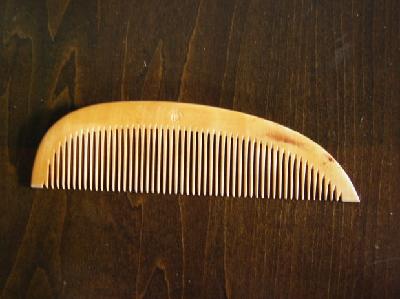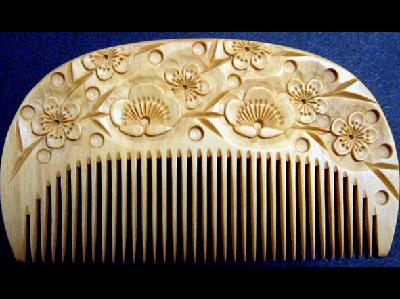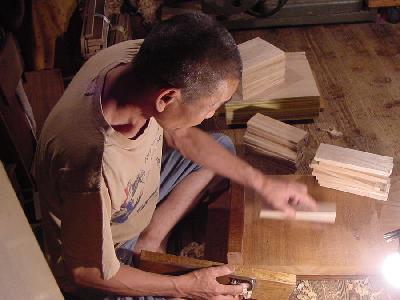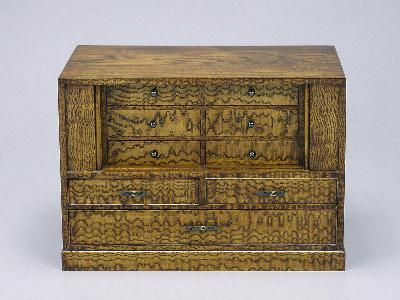|
Satsuma Tsugegushi or Satsuma Comb is a general term for the comb made from a Satsuma box tree.
Ibusuki region of Kagoshima Prefecture, having a climate with high temperatures and high humidity, is known to produce high quality box trees.
Satsuma box tree, which is extremely detailed and hard, produces a comb that is difficult to break. The tree also has a natural yellowish surface and beautiful gloss, and has been much valued.
The origin of the comb is said to date back to when samurai warriors from Satsuma clan first started making it when they came back from Edo (now Tokyo) after finishing the flood prevention works at Kiso River in the middle of Edo period.
Since that time, comb making became widespread as a side job for samurai warriors in the lower classes, and the comb became well-known nationally for its high quality.
In Ibusuki region, when a girl was born, a box tree was planted which grew up together with the girl. When she got married, a comb would be sent to take with her along with her other furniture.
As the comb is used to brush hair with camellia oil for a longer period of time and it ages, the light yellowish surface of the comb glosses further and more finely. In addition, it combs one’s hair very smoothly and feels soft and gentle to the scalp. Also, it doesn’t create static electricity. With these characteristics, Satsuma comb is a fine product that is still highly sought after.
Ibusuki region of Kagoshima Prefecture, having a climate with high temperatures and high humidity, is known to produce high quality box trees.
Satsuma box tree, which is extremely detailed and hard, produces a comb that is difficult to break. The tree also has a natural yellowish surface and beautiful gloss, and has been much valued.
The origin of the comb is said to date back to when samurai warriors from Satsuma clan first started making it when they came back from Edo (now Tokyo) after finishing the flood prevention works at Kiso River in the middle of Edo period.
Since that time, comb making became widespread as a side job for samurai warriors in the lower classes, and the comb became well-known nationally for its high quality.
In Ibusuki region, when a girl was born, a box tree was planted which grew up together with the girl. When she got married, a comb would be sent to take with her along with her other furniture.
As the comb is used to brush hair with camellia oil for a longer period of time and it ages, the light yellowish surface of the comb glosses further and more finely. In addition, it combs one’s hair very smoothly and feels soft and gentle to the scalp. Also, it doesn’t create static electricity. With these characteristics, Satsuma comb is a fine product that is still highly sought after.
| [+ADDRESS] | 
|















